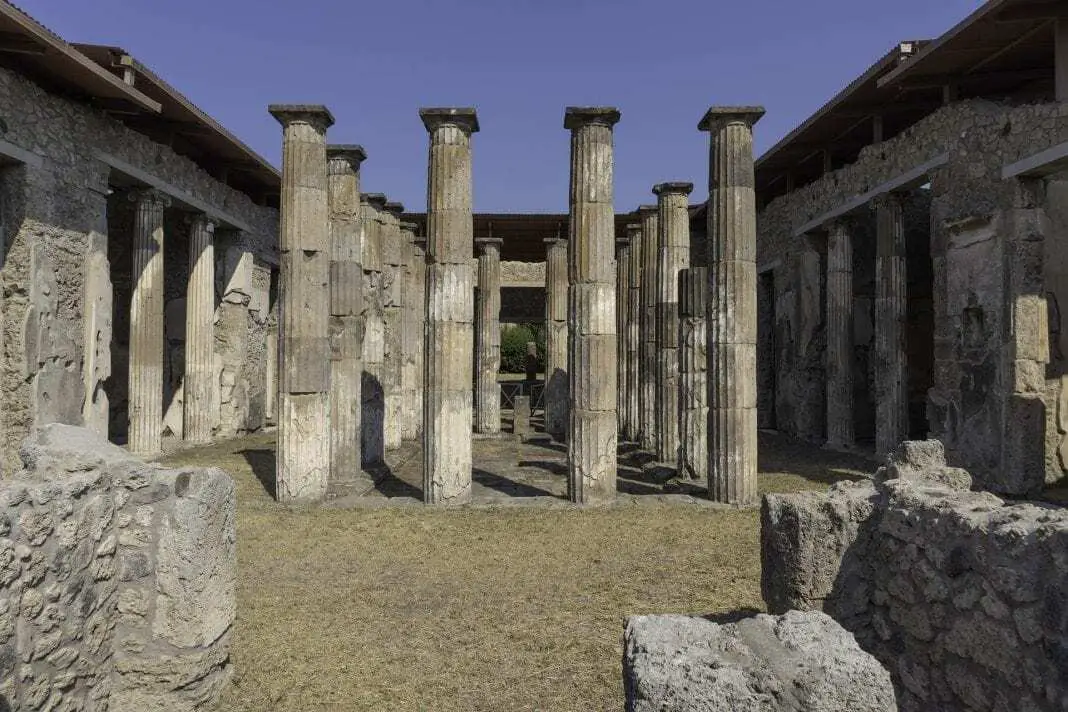Pompeii, a UNESCO World Heritage Site, was a Roman city located in the modern comune of Pompei near Naples in the Campania region of Italy.
The first stable settlements on the site date back to the 8th century BC when the Oscans founded five villages in the area. During the 6th century BC, the settlements merged into a single “city”, centred on the crossroad between Cumae, Nola, and Stabiae and was surrounded by a tufa city wall.
This city would later be absorbed into the Etruscan League of cities and new public buildings such as a primitive forum or simple market square was built, as well as the temple of Apollo.
After the Samnite Wars from 290 BC, the city was forced to accept the status of socii of Rome, maintaining, however, linguistic and administrative autonomy. After the Social Wars in 89 BC, Pompeii finally became a Roman colony with the name of Colonia Cornelia Veneria Pompeianorum
At its peak, Pompeii had a population of around 20,000 inhabitants and became an important passage for goods that arrived by sea and had to be sent toward Rome or southern Italy along the nearby Appian Way. The city saw major construction projects with new public buildings that included the amphitheatre, aqueduct, baths and temples complexes.
Pompeii, along with Herculaneum and many villas in the surrounding area was buried under 4 to 6 m (13 to 20 ft) of volcanic ash and pumice in the eruption of Mount Vesuvius in AD 79.
Largely preserved under the ash, the excavated city offered a unique snapshot of Roman life, frozen at the moment it was buried and remains a detailed insight into the everyday life of its inhabitants.
To select full-screen mode for the mapping tool, please Click Here
Map Credit : Pompeii Bibliography and Mapping Project

